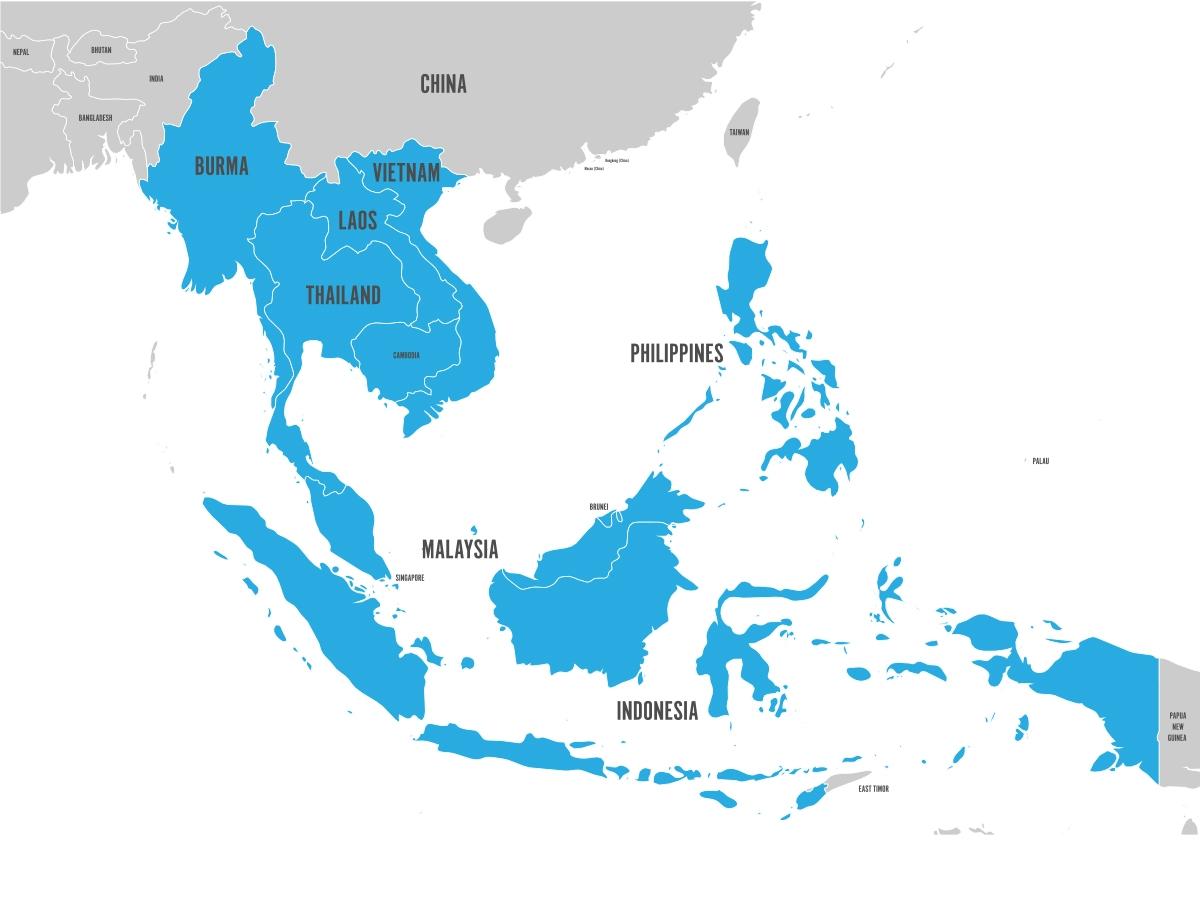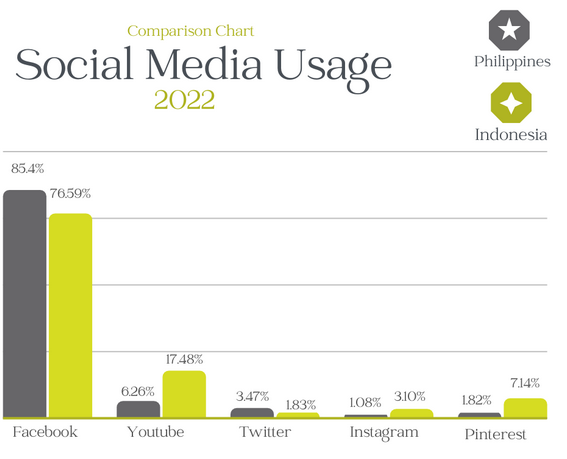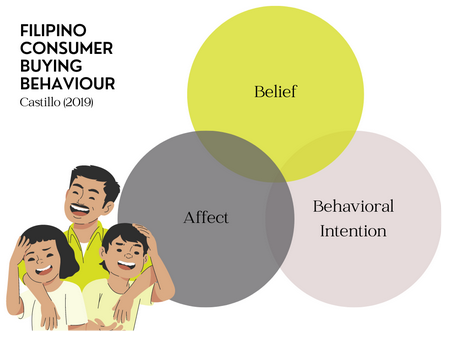Tapping into the Southeast Asian Market

- Dec 7, 2022 modified: Dec, 19 2024
Tapping into the Southeast Asian Market
Throughout the years, Southeast Asian audiences have made their way to most social media platforms. There is no doubt that they comprise a huge percentage of social media users. According to January 2022 statistics, there are approximately 76.01 million users from the Philippines and 204.7 million users from Indonesia.
During the pandemic, there has been a significant rise in the popularity of online shopping platforms, especially in Southeast Asia. In 2022, there has been a 14.3% online retail sales growth. This makes it an exciting avenue for more growth in the e-commerce industry.
Currently, Shopee is the leading online marketplace in Southeast Asia. They garner around 342.8 million visits a month. This is followed by Tokopedia, Lazada, Bukalapak, and Blibli.
With globalization continuing to boom, many businesses may find themselves wanting to tap into the Southeast Asian market. How do you get the attention of this specific demographic? What works for them? Which products are booming or flopping?
We'll be tackling the Southeast Asian demographics, specifically the Filipino and Indonesian markets. We'll go over marketing trends, social media platform usage, and the culture within these demographics. So, read ahead to learn more about this specific market!
Marketing Trends in Southeast Asia
The Global Covid-19 pandemic posed an avenue for new trends to make their way into the Southeast Asian market. The limited opportunities for individuals to go out shopping. Thus, this paved a way for online e-commerce and digital marketing to be the main source of advertisement.
Here are the top marketing trends seen in Southeast Asia in 2022!
1 Smartphone Ready Platforms
There's no denying that online selling platforms had their moment in 2022. The ability of these online platforms to be accessible at the mere touch of a smartphone was one of the main reasons why e-commerce was so successful in 2022.
Platforms like Shopee, Lazada, and Tokopedia generally give out a user-friendly experience for their consumers, making the process more convenient!
It was estimated that Southeast Asia will have approximately 326.3 million smartphone users by 2022 and will continue to rise steadily until 2026. It was also found that mobile purchases are two times higher than desktop purchases in the Philippines and most Southeast Asian markets.
A business with a mobile-first agenda poses a great strategy if you decide to tap into the market!
2 Inclusivity
A diverse representation matters a lot in branding. People are more likely to identify with a brand that they can see themselves in. This is a sure way to garner loyalty from your audience.
Despite the world gearing towards a more authentic and inclusive way of branding, Southeast Asian representation is still quite lacking.
Asians alone had been deprived of accurate representation in media and brands. Even with this fact at hand, Southeast Asians are still commonly forced to be identified with East Asian representation. This leaves little to no room for appropriate Southeast Asian representation at all.
An inclusive and accurate representation of Southeast Asians will have your audience feel more seen and validated. Appropriate research into your audience's culture and history must be done to ensure a respectful representation.
3 Influencer Advertising
There has been a rise in online content creators in the Southeast Asian demographic. These creators range from makeup tutorials, to mukbangs, and vlogs.
Most of these creators go by the term 'influencers'. As the name suggests, these individuals create content that aims to influence and sway their audiences. Influencers typically go for the down-to-earth vibe that makes them relatable to their viewers.
With this strategy, they can create a stronger and more inclusive bond with their audience. After all, people are much more inclined to purchase something recommended by a friend or a family member.
Influencers also pave a way for more inclusive affiliate marketing using social media. Gone are the days when paid ads needed to be on billboards. Influencers can promote products with just one social media post or a video shoutout and it can still reach a large audience.
There's no doubt that social media plays a major role in this. This is why tapping into popular social media outlets used by Southeast Asian audiences may be an effective avenue.
Best Social Media Platforms to Use for Marketing
With a mobile-first and an influencer-centered strategy seeming to be the smartest move when marketing to Southeast Asian audiences, it is important to know which social media platforms are popular.
The following 2022 statistics of social media usage among Filipino and Indonesian users are as follows:

Facebook is the top social media used by both countries in 2022 by a huge percentage. 85.4% of Filipinos and 76.69% of Indonesians use Facebook the most. Thus, using Facebook to reach your target audience may be the best strategy.
The Filipino Audience

A study by Castillo (2018) explained consumer buying behavior in the Philippines and how it is affected by multicultural influence. According to the study, the Filipino consumer is motivated mainly by three things: beliefs, affect, and behavioral intentions.
- Belief. Old Filipino beliefs still influence Filipino consumerism. Therefore, any products or marketing that may hold a bad light among Filipino beliefs will surely not blend well with the market. Understanding Filipino culture is key to knowing what will work for them.
- Affect. Filipinos will hold certain feelings towards brands and other objects. The influence of family is a big factor in whether or not they will make a purchase. In a typical Filipino household, the parents will have the most influence on their children with which brands, products, or deals to prioritize.
- Behavioral Intention. To buy or not to buy the brand? Filipinos tend to look into alternative brands and weigh prices and comparisons. Of course, a cheaper alternative would be preferable. This is one of the reasons why online e-commerce is a popular alternative for typical mall brands. However, Filipinos will also consider if they can use the product. Will they be able to use it for a long time? Will they put it to good use?
In conclusion, the Filipino audience is heavily reliant on influence among peers and their feelings. Tapping into a more personal and inclusive approach in marketing your products is a sure way to get into the hearts of the Filipino audience.
The Indonesian Audience

Multinational brands have also been on the rise in the Indonesian market. With the rise of social media and e-commerce, the Indonesian market has also proven to be a potential target for businesses.
Indonesians have a very religion-centered lifestyle. According to recent studies, there has been a change in Islamic and modern-oriented lifestyles in Indonesia. There is a development of a Halal lifestyle that reflects their high religiosity.
Halal is an Arabic word that means permissible. Halal diets prohibit foods that contain blood, alcohol, and foods prepared with it, and certain types of meat, including pork, most reptiles, birds of prey, and carnivorous animals
In Indonesia, products must be Halal certified. This means that the product is guaranteed that it has passed international standards from preparation to packaging and handling.
Working with WhatsApp
WhatsApp is a free-cross platform messaging service. This app is well used among Southeast Asians, especially Indonesians. With WhatsApp, people are able to exchange messages, photos, audio, videos, and more.
Aside from those functions, WhatsApp has also been a central tool used for small and large businesses alike. The following can be done in WhatsApp:
- Take Orders. Businesses are able to take customers orders via text chat. Chats on WhatsApp can be automated to cater to your customer's orders.
- Provide Quick Services. You can schedule and automate any FAQs with WhatsApp! This is convenient when customers need a quick question or a quick service.
- 24 Hour Customer Support. Since the platform is online, you can be available at any time for your customers.
This non face-to-face approach to daily tasks is a convenient way favoured by most Southeast Asians. Along with e-commerce, this method has proven that you don't need to get out from the comfort of your own home to avail any service!
Consider these factors if you're exporting to Southeast Asia!
This may be one of the best times to start considering the Southeast Asian market. With borders opening up and with social commerce being more active than ever, you can expect this target market to be easily accessible.
One of the most notable things about Southeast Asian consumers is that they are big fans of e-commerce and social commerce platforms. It's recommended that you get the hang of these platforms.
According to Austrade, these are the top e-commerce and social commerce platforms in Southeast Asia as of 2022.
| Market | Platform |
|---|---|
| Indonesia | Shopee. Tokopedia, Youtube, Bukalapak, Instagram, Facebook, WhatsApp |
| Malaysia | Shopee, Lazada, Zalora, Youtube, Instagram, Facebook |
| Philippines | Shopee, Lazada, Zalora, Instagram, Facebook, Viber |
| Singapore | Shopee, Lazada, Qoo10 |
| Thailand | Shopee, Lazada, Facebook, Line |
| Vietnam | Shopee, Zolo, Tiki, Lazada, Facebook, Youtube, Instagram, Zolo |
Among the six countries listed, Shopee remains to be a common denominator. This e-commerce platform remains to be the largest in Southeast Asia with approximately 300 million visitors.
There are a lot of factors to consider if you're deciding on marketing to the Southeast Asian market. The psychology and marketing behind it differ from the Western audience. Here are some key factors to consider:
1 E-commerce is your best friend
In the Western world, Amazon is considered one of the biggest e-commerce platforms. In Southeast Asia, countless platforms reign as crowd favorites. As mentioned before, Shopee remains to be one of the largest platforms used by this demographic.
The Southeast Asian e-commerce industry is largely involved in a lot of cash-on-delivery bases. Even with countless e-payment systems available, the cash-on-delivery method is still largely used.
Knowing which social media platforms to use is important as well. Social media platforms such as Facebook, Instagram, Viber, and WhatsApp play a huge role in Southeast Asian consumerism. These platforms create a space where people can communicate directly with brands and be able to build brand loyalty.
2 Be more specific in demographics
Southeast Asia is a blend of different nationalities and cultures. With that said, you must target a very specific demographic.
Take for example in the Philippines - the profile of online shoppers tend to be females from ages 18-25 years old. Naturally, you would think that health, beauty, and fashion products would be the smart product to sell.
Another thing to consider is the varying income levels from different parts of Southeast Asia. A thorough research and reading through economic reports of the demographic you are targeting.
3 Take advantage of National Holidays
By taking notes of certain holidays in specific countries, you can create a better strategy in marketing. This method can win the hearts of the market. Examples of notable holidays in specific countries are listed.
- Christmas Day and New Year's Day. These holidays are widely celebrated around the world.
- Lunar New Year. This holiday is still widely celebrated in Southeast Asian countries due to Chinese influences. This holiday marks the beginning of the Lunar calendar.
- Holy Week. This celebration is popular among Catholics, specifically Filipinos. This is a week-long celebration of the passion of Christ.
- Independence Day. Different countries celebrate different Independence Days.
- Eid al-Fitr & Eid al-Adha. These are important Muslim Holidays that celebrate the end of Ramadan and the end of Hajj.
- Buddhist Holidays. Predominantly Buddhist countries such as Thailand observe a lot of these holidays such as Makha Bucha day.
These are holidays when people tend to spend more on celebrations and gatherings with family and friends. At these times, people would look for food, celebratory items, and gifts to share for their holidays.
Should You Expand Your Business to Southeast Asia?
Southeast Asia is rich in agricultural products. There is still demand for niche products, or product of renown quality, like Australian Wine. There is a variety of products and ventures that can flourish with this market.
Online platforms and online shops will be your best friend. E-Commerce is at an all-time high demand for the year 2022 and will continue to be for the following years to come. Here are some of the high demand products in 2022:
- Health Products. Any sort of health related products such as multivitamins, fish oils, and dietary supplements are in high demand. This had its peak during the pandemic and will still continue to be a staple in the Southeast Asian market.
- Gadgets and Accessories. With social media usage at its peak, gadgets and accessories aren't going anywhere soon. Asia is also known to have smartphone brands of their own at a more affordable price. The market for gadgets and its accessories are always in demand due to the popularity in personalizing their own gadgets.
- Fashion, Beauty, and Skincare. Southeast Asian influencers adopt different skincare and beauty techniques from different countries like Korean beauty products to Western beauty products. Online content creators still remain the top influencers of fad and fashion in 2022.
If you're planning to target the Southeast Asian market, this may be the time to finally start. 2023 will continue to open more avenues for global competition, especially with the Global Covid-19 pandemic restrictions finally easing up.
Search News Articles...
Recent Articles

Unique Web Systems Matter in a World of Sameness
- Dec 26 2025
- /
- 16

Most AI Websites Fail to Rank
- Nov 18 2025
- /
- 250

Sitemap.xml Best Practices
- Oct 14 2025
- /
- 821

Fake Reviews on Google My Business
- Oct 07 2025
- /
- 468

Sending Emails from Code
- Sep 17 2025
- /
- 568

US Tariff Shifts Undermining eCommerce
- Sep 05 2025
- /
- 695

Small Business Success Formula
- Aug 23 2025
- /
- 533

Do Strong CTAs Help or Hurt Your Website?
- Jul 31 2025
- /
- 728

AI Crawlers vs Search Crawlers
- Jul 04 2025
- /
- 920

AI vs. Human Writing - How to detect Ai
- Jun 26 2025
- /
- 1305
View All News Articles
Categories
A Gold Coast SEO and Web Developer